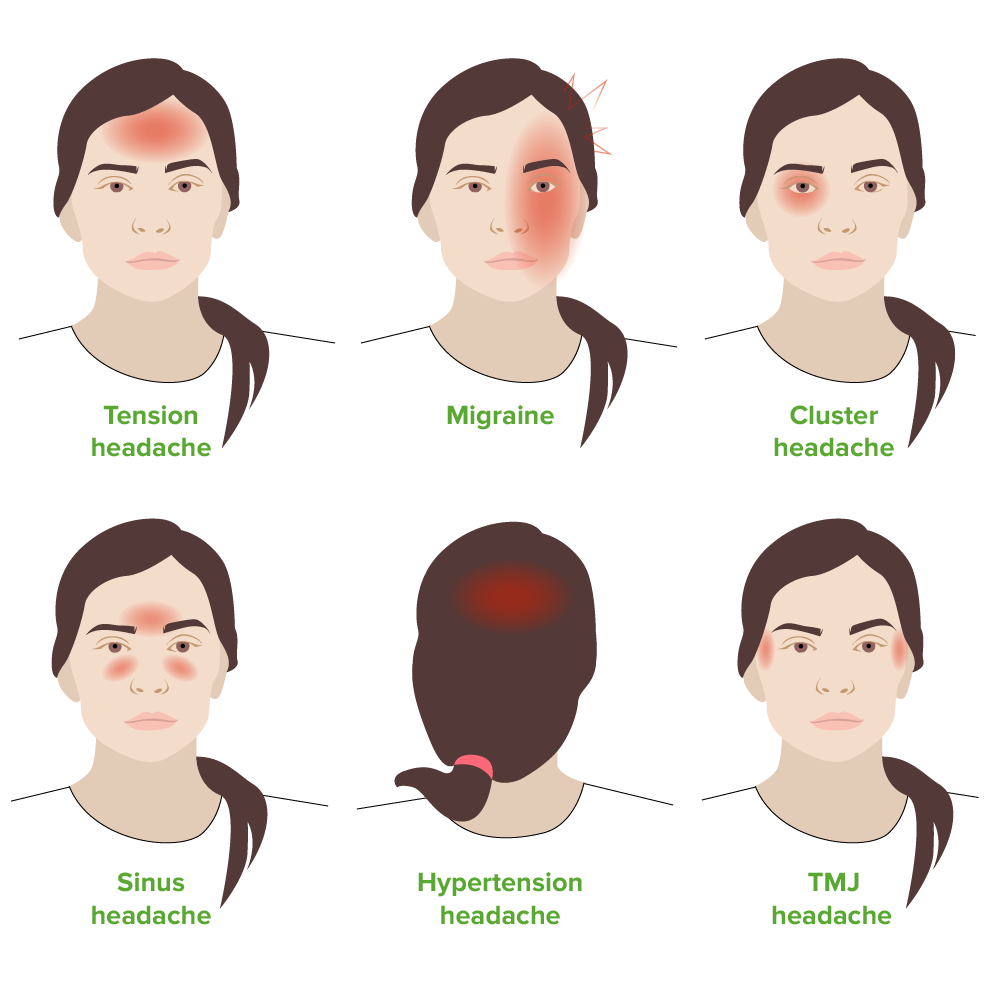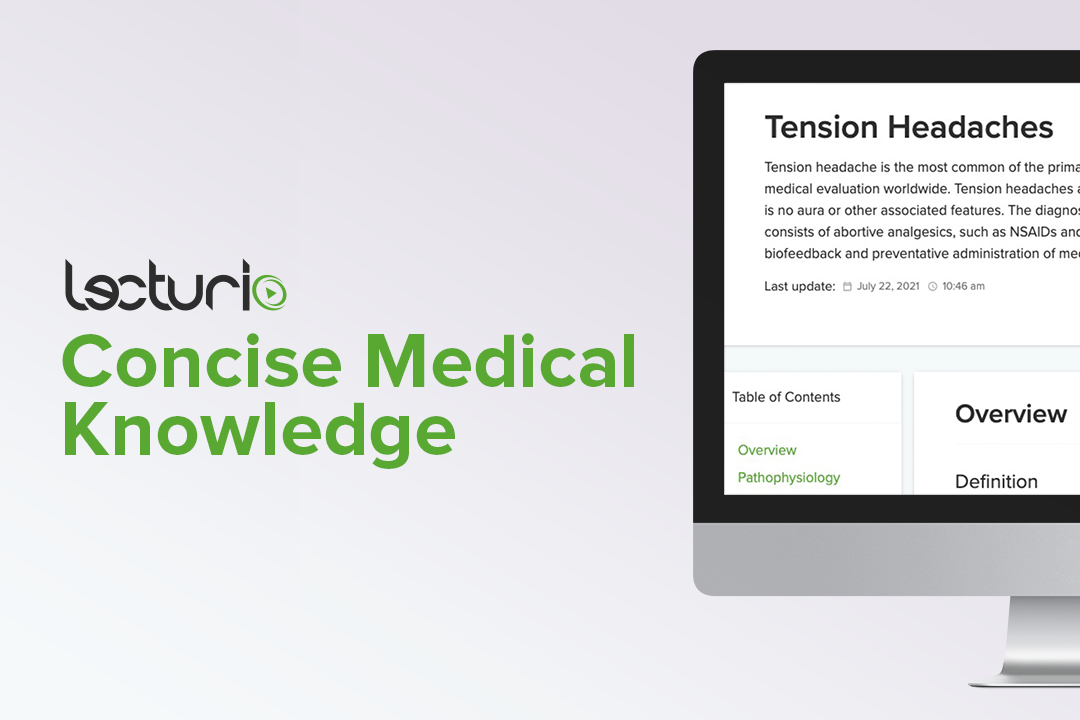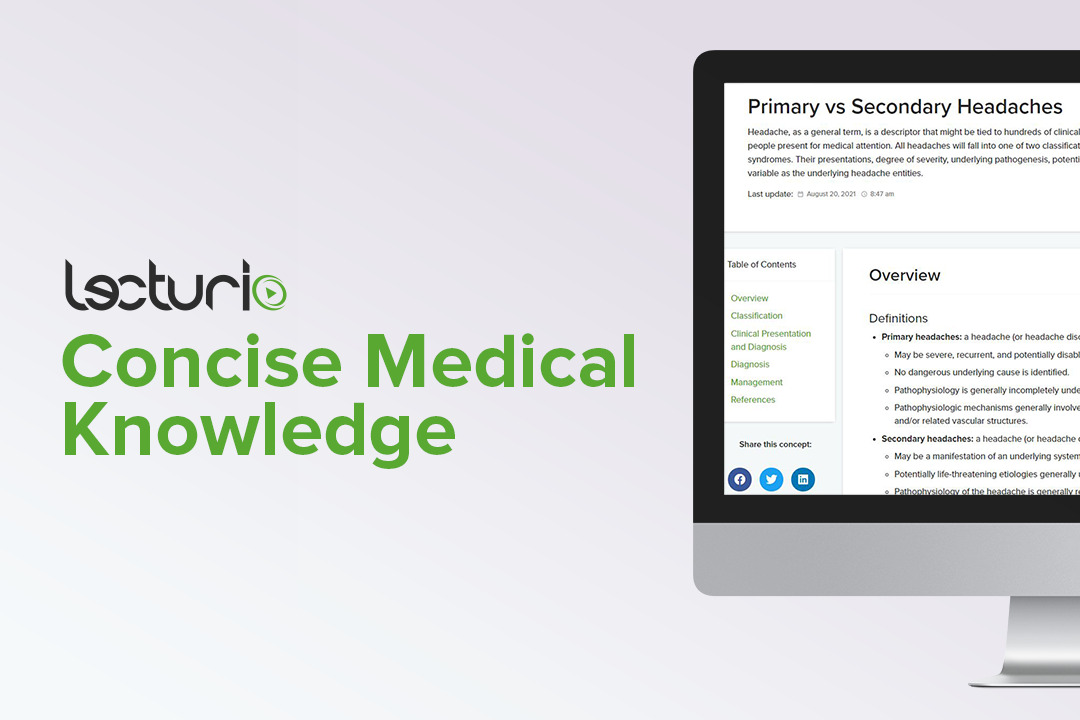Playlist
Show Playlist
Hide Playlist
Brain Tumor and Tension Headaches
-
Slides 08 Headache Neuropathology I.pdf
-
Reference List Pathology.pdf
-
Download Lecture Overview
00:01 Let’s take a look at brain tumors, part of your chronic headache manifestation. 00:08 There’s no classic headache syndrome that defines a tumor, or even a mass. 00:13 So, it’s about suspicion, and that could be a little dangerous because not everyone, not all doctors are going to be as astute as you are. 00:23 Typically of insidious onset, though could be sudden. 00:27 Be careful with hemorrhage, right? May be diffuse or localized, but localization does not necessarily imply tumor location. 00:35 That’s important. 00:37 May be worse in the morning or waken patient at night due to raised ICP, intracranial pressure. 00:44 Focal deficit may be present, and obviously, imaging must be done initially. 00:55 Tension headaches. 00:56 Most common variety of headache is this. 00:59 May limit but not prohibit activities. 01:02 Usually, bilateral, often with occipital, temporal, frontal band. 01:09 You wear a band around your head if you’re running, exercising. 01:12 That’s what this particular description is, bandlike predominance. 01:17 Typically dull and aching, but pressure is not infrequent. 01:22 Onset is more gradual than with migraine. 01:25 Remember, migraine, even though it’s a chronic headache, we’re talking about 30 minutes in which all of a sudden, it becomes very, very intolerable. 01:34 Here, with tension, it’s more gradual. 01:39 Mild nausea may be present. 01:42 Associated symptoms are absent or mild. 01:44 Neurologic exam, actually, unremarkable. 01:47 And here, it’s important that you pay attention to tenderness in the cervical paraspinal or temporalis muscle, may be seen but is not common nor diagnostic. 01:59 Just keep that in mind as being, perhaps, a presentation that you’ll be given. 02:09 Patients may have both migraines and tension type headaches, a heightened sensitivity to pain pathways is thought to play a role in tension type headaches, which can be episodic or chronic in nature. 02:20 Migraines may precipitate tension type headaches and vice versa. 02:24 Tension type headaches are often relieved with over-the-counter analgesics, such as acetaminophen, ibuprofen and naproxen. 02:31 Migraines may also respond to these medications. 02:34 It's important to avoid overuse of over-the-counter analgesics and assess patients for analgesic abuse, although these are not addictive. 02:41 Overuse can lead to chronic daily headaches, which are defined on the slide. 02:44 Tension type headaches do not respond to ergot amines, and opioids are not recommended. 02:49 Preventative management for tension type headaches includes behavioral therapies and self-care. 02:54 This may include counseling and stress reduction. 02:57 Regular relaxation, meditation, exercise and avoidance of excess caffeine or alcohol are also important in reducing tension type headaches. 03:05 In addition to these healthy lifestyle recommendations, prophylactic medications may be needed. 03:11 Management: Prophylactically, tricyclics, such as amitriptyline. 03:15 Beta blockers are not particularly helpful. 03:18 In migraines, quite or could. 03:22 Treat underlying anxiety and depression really is what it comes down to. 03:25 These patients tend to be stressed out about something, huh? And for each individual, now this is where it becomes interesting, is the fact that we all have different threshold for stress. 03:36 Some of us, even the little bit of “anxiety” is enough of a threshold in which the patient develops tension headache. 03:45 For others, the threshold is limitless. 03:48 So, you want to be quite familiar with the psychology of your patients. 03:53 Psychotherapy is the most effective because you’re looking for that underlying stress that the patient doesn’t even know that he or she is experiencing, and it could be something, just driving or work, relationships, whatever it may be, but this oftentimes, will be helpful in refractory cases.
About the Lecture
The lecture Brain Tumor and Tension Headaches by Carlo Raj, MD is from the course Headache – Pathophysiology. It contains the following chapters:
- Brain Tumor
- Tension Headaches
Included Quiz Questions
Which of the following is the most common type of headache?
- Tension headache
- Migraine headache
- Cluster headache
- Subdural headache
- Meningitis headache
What is TRUE regarding tension headache and its contrast with migraine?
- Tension headache is more gradual in onset, and there may be tenderness in the paraspinal and temporalis muscles.
- Tension headache is more sudden in onset, and there may be tenderness in the paraspinals and temporalis muscles.
- Tension headache responds to ergotamine more frequently.
- Tension headache presents with photophobia and neurological symptoms.
- Tension headache is associated with nausea and vomiting.
Customer reviews
5,0 of 5 stars
| 5 Stars |
|
1 |
| 4 Stars |
|
0 |
| 3 Stars |
|
0 |
| 2 Stars |
|
0 |
| 1 Star |
|
0 |
1 customer review without text
1 user review without text






